The windows of the living room and the master bedroom are pushed from the inside to the outside, with a maximum of 30 degrees. According to local regulations (both have relevant regulations): High-rise buildings shall not adopt outer casement window (including dagger outer casement window). The upper hanging window type is selected, and the opening angle should not be greater than 30 degrees.
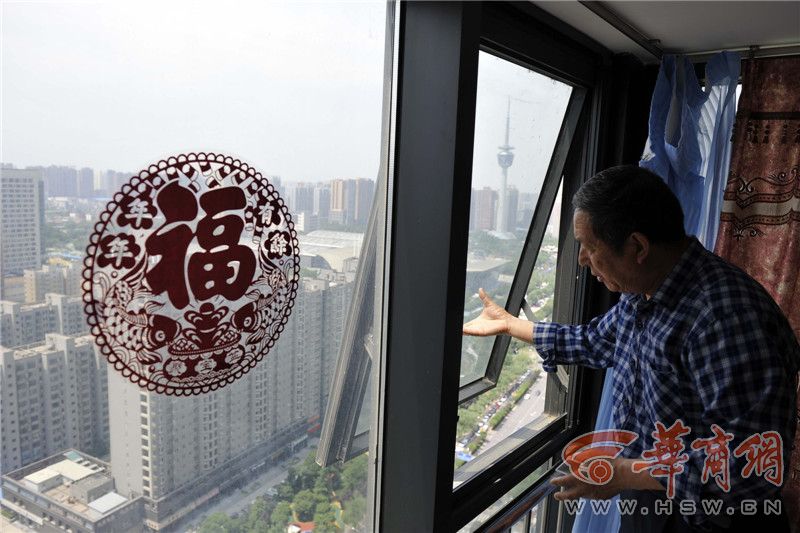
1. Window type
First, let's look at the classification of windows in daily life. According to GB8479-2003 aluminium windows, it can be divided into the following types according to the opening method:

There are two possibilities for the subject to open a window of only 45 degrees, hanging window or a fixed angle of casement window.
Suspension window is divided into upper suspension window, lower suspension window and middle suspension window according to different hinge positions, and is divided into inner opening and outer opening according to the opening direction. Moreover, its maximum angle is not a fixed 45 degrees. It seems that there are different standards according to different ventilation requirements. This is not checked carefully, if you are interested, you can check it yourself.
According to the definitions given in GB/T 5823-2008 building doors and windows terms and GB5823-86 building doors and windows terms:
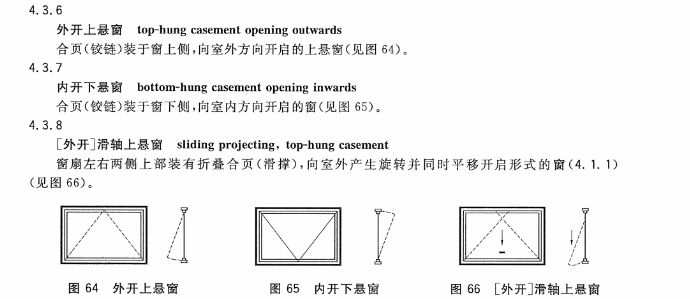
Take a look at the physical pictures respectively.
Hanging window: a window with hinges (hinges) installed on the upper side of the window and opened inward or outward.
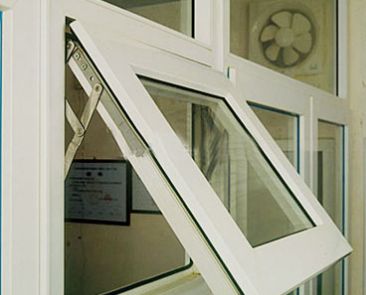
Suspension window: the shaft is installed in the window that can rotate along the axis.
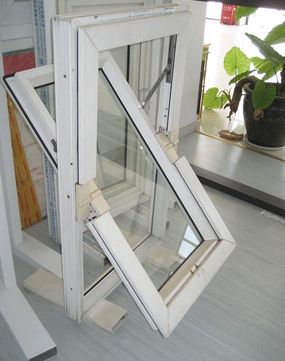
Lower hanging window: a window with hinges (hinges) installed on the lower side of the window and opened inward or outward.
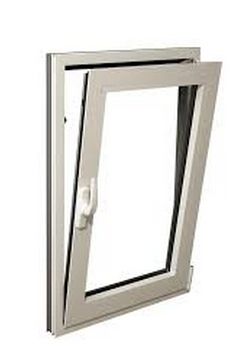
Fixed angle casement window:
We can also see from the picture that within the range of the suspended window, according to different designs, the lower suspended window is generally opened inside, while the upper suspended window is generally opened outside. Only in this way can the waterproof effect be better.
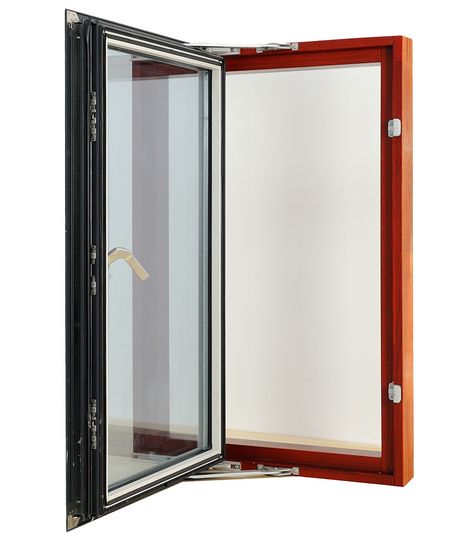
2. Performance indicators
After understanding the types of windows, let's look at the performance indicators of various windows. According to the indexes such as size, material and thickness, different grades of performance are distinguished. The performance indexes mainly include:
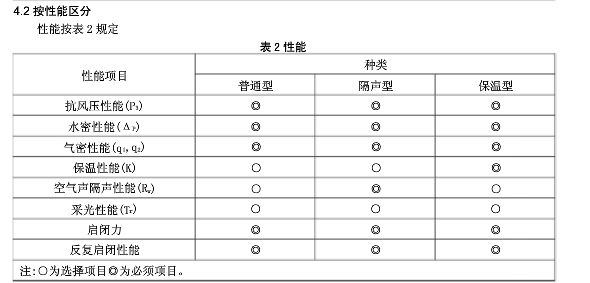
According to the technical specification of residential building doors and windows engineering, the performance indexes of residential building doors and windows have the following requirements:
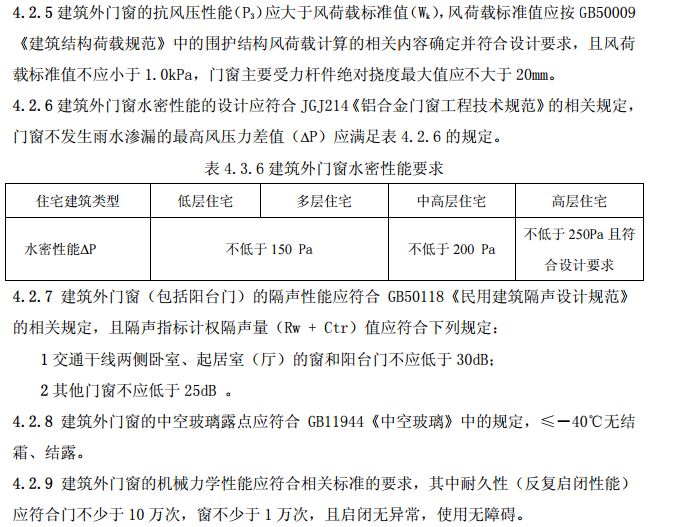
Time relationship I didn't look for more relevant requirements for door and window design in building codes, but according to the above requirements, we can see that buildings are different according to their functions, there are specific standards for doors and windows and other aspects, that is, the suspension window design is also selected according to the situation. In our life, we often use suspended window design for buildings such as high-rise office buildings, hospitals, teaching buildings, etc. So what are the advantages and disadvantages of suspended Windows compared with other types of windows? Let's continue to look down.
3. Advantages and disadvantages
Compared with other types of windows, suspended windows have several advantages:
3.1. Ventilation. The design of the suspended window makes the wind not blow directly to people through the window, especially in high-rise buildings, the wind is very strong, and the adoption of the suspended window can effectively avoid the phenomenon that the wind blows all over the house. People who work in high-rise buildings must have this feeling, that is, the farther away from the ground, the greater the wind speed. If the direct window is wide open, the wind blows into the room, even if the temperature is appropriate, the comfort level is not high. At this time, the suspension window can effectively reduce the wind speed, ensure the ventilation efficiency and improve the comfort.
3.2. Security aspects. If the subject has experience in decoration, he will definitely encounter this kind of problem, that is, if he opens the window inside, the children at home will easily touch his head, and the glass quality in earlier years is not as good as now, living on the six or seven floors, sometimes the wind is bigger and the windows are easy to break the glass. Even in today's high-rise buildings, it is very difficult to fix casement window when the wind is strong. If the suspension window is used at this time, it can achieve good results, especially the upper suspension and the lower suspension, basically, there is no danger of touching the head. Of course, sliding window also has this advantage. The defect of sliding window is that it has no good preventive effect on falling outside, and the effect of fixed angle is very obvious at this point. Others also mentioned that hospitals and other places use hanging window design, there may also be considerations in this regard.
About angle, here
@ Grapefruit
Sauce guidance: "when opening the window below 45 degrees, the window thrust surface is relatively small. One is to ensure the safety of the window, and the other is also to require small parts. If the opening angle is too large, the separation force in the direction where the window splits will be large. In this case, on the one hand, the sudden strong wind cannot be prevented, on the other hand, the demand for supporting parts is also large, and the aging degree of parts will be faster."
3.3. Cleaning. Casement window in rainy days is simply a weak existence. If there is a passageway in the south and north windows at the same time, rain can easily enter the house; If it is sunny, dust should be considered, the passing wind will definitely bring more dust to the house. If it is used with car window shade, it needs to be cleaned regularly for car window shade, otherwise car window shade will be as dirty as the filter screen for a period of time. If the suspended window is used, it will hardly be affected in rainy days, and dust can be reduced to some extent.
3.4. Sealing. The structural characteristics of the suspended window make its sealing performance better. For example, sliding window, we all know that the workmanship is slightly worse than sliding window. Even if it is closed, sometimes the two sides will be ventilated, especially in winter, it has a great influence on indoor insulation. In contrast, the structure of the suspended window is more complex and the device is more precise, which indirectly improves its sealing performance a lot.
3.5. Practical aspects. The degree of freedom of the suspended window is higher. As far as I know, some suspended windows can be hung up and down and opened horizontally, and the opening method can be changed according to different requirements. This is difficult to do with the other two windows.
Of course, suspended windows also have their disadvantages, such as high installation cost, high maintenance cost once precision devices are damaged, and indoor lighting will be affected if colored glass is used.
By the way, the subject mentioned the problem of escape.
My personal opinion is that hanging windows are more common in high-rise buildings, and lower floors use casement window or sliding window. This may not be very serious, but the escape of high-rise buildings from the window is almost dead. Moreover, if the building adopts the one mentioned in my answer above, which can be both flat and suspended, as long as it is flat, it can meet the need of escaping from the window. (It's awkward to say so)
Above.










